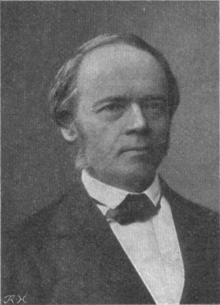List of heads of government of Norway
 |
| This article is part of a series on the politics and government of Norway |
| Constitution |
|
Government |
|
Parliament
|
This is a list of heads of government of Norway. In the modern era, the head of government has the title prime minister (statsminister). At various times in the past, the highest governmental title has included steward (rigsstatholder), viceroy (vicekonge), and first minister (førstestatsraad)
Until 1873, the king of the personal union between Sweden and Norway governed Norway through two cabinets: one in Stockholm and another in Christiania (now Oslo). The newly created Stockholm cabinet consisted of a prime minister and two ministers, whose role was to convey the attitudes of the Christiania cabinet to the Swedish king.
The cabinet in Christiania was led by a steward (rigsstatholder). For brief periods, the incumbent crown prince was appointed Viceroy of Norway by the king, in which case the viceroy became the highest authority in Christiania.
Whenever the king was present in Christiania, however, he assumed the highest authority, thus putting the governor or viceroy temporarily out of charge. Likewise, when there was no governor, viceroy or king present in Christiania (which was not unusual), the cabinet was led by the first minister, who was the most prominent member of the cabinet.
In July 1873, the position of governor was abolished after being vacant since 1856. Simultaneously, the post of first minister in Christiania was upgraded to Prime Minister of Norway. Although the office of Norwegian Prime Minister in Stockholm still existed, the real power and influence over state affairs was moved to the prime minister in Christiania, while Prime Minister in Stockholm became the second highest cabinet position, responsible for conveying the government's views to the King.
When the union was dissolved in 1905, the position of prime minister in Stockholm was abolished.
Stewards of Norway
The Steward of Norway, styled Rigsstatholder in Danish (riksstattholder in modern Norwegian spelling), meaning Lieutenant of the realm (see Steward (office)), was the appointed head of the Norwegian Government in the absence of the Monarch during the Dano-Norwegian personal union. As Norway was a separate kingdom, with its own laws and institutions, the position of steward of Norway was arguably the most influential position for a Danish-Norwegian nobleman or royal to hold, second to the King.
Stewards of Norway (1536–1814)
- Peder Hansen Litle (1536–1551)
- Jesper Friis (1551–1556)
- Christiern Munk (1556–1572)
- Pouel Ottesen Huitfeldt (1572–1577)
- Ludvig Ludvigsson Munk til Norlund (9 July 1577 – 1583)
- Ove Juel (1583–1588)
- Aksel Gyldenstjerne (1588–1601)
- Jørgen Friis til Krastrup (1601–1608)
- Enevold Kruse til Hjermislov (1608–1618)
- Jens Hermansson Juel (1618–1629)
- Christopher Knudsson Urne til Asmark (1629–1642)
- Hannibal Sehested (1642–24 June 1651)
- Gregers Krabbe (1651–20 December 1655)
- Niels Trolle til Trollesholm og Gavnø (1656–28 March 1661)
- Iver Tageson Krabbe (8 Oct 1661 – 1664)
- Ulrik Frederik Gyldenløve, greve til Laurvig og Tønsberg (Jan 1664–1699)
- Ove Juel (Vice Governor-general of Norway under Gyldenløve) (1669 – 5 June 1675)
- Jens Juel (Vice Governor-general of Norway under Gyldenløve) (5 June 1675 – 9 May 1682)
- Just Högh til Fultofte (Vice Governor-general of Norway under Gyldenløve) (9 May 1682 – 26 September 1694)
- Frederik Gabel (30 September 1699 – 1708)
- Johan Vibe (10 April 1708 – 22 Feb 1710)
- Ulrik Frederik Valdemar, baron Løvendal (1 Aug 1710 – 30 April 1712)
- Claus Henrik Vieregg (4 August 1712 – 14 July 1713)
- Frederik Krag (19 September 1713 – 1722)
- Ditlev Vibe (17 April 1722 – 5 October 1731)
- Patroclus Rømeling (acting) 1731–1733
- Christian greve Rantzau (1733–1739)
- Hans Jakob Arnold (acting) (1739 – 11 Sep 1750)
- Jacob von Benzon (11 September 1750 – 8 February 1771)
- Carl, Landgraf zu Hessen (4 July 1766 – January 1768) (acting for Benzon)
- 8 Feb 1771 – 25 July 1809 Vacant
- Christian August von Schleswig-Holstein-Sonderburg-Augustenburg 25 July 1809 – 11 Jan 1810
- Friedrich Landgraf zu Hessen-Kassel 11 Jan 1810 – 11 May 1813
- Christian Frederik af Danmark (11 May 1813 – 16 Feb 1814)
In 1873, the position of First Minister was upgraded to Prime Minister.
Prime Ministers of Norway (1814–1905)
Prime Ministers (1814–1873)
- Prior to 1884, there were no organised political parties in Norway, and the Prime Ministers were considered senior civil servants (Embedsmenn). They were appointed by the King and were not subject to legislative confirmation. All Prime Ministers before 1884 opposed the constitutional reforms proposed by the parliamentary opposition, and were in their time viewed as conservatives. They were subordinate to the Steward, Viceroy and First Minister of Norway.
| # | Name (Birth–Death) |
Picture | Took office | Left office | Political party | Term |
|---|---|---|---|---|---|---|
| 1 | Peder Anker (1749–1824) |
 |
1814 | 1822 | N/A | 1 |
| 2 | Mathias Sommerhielm (1764–1827) |
 |
1822 | 1827 | N/A | 2 |
| 3 | Severin Løvenskiold (1777–1856) |
 |
1828 | 1841 | N/A | 3 |
| 4 | Frederik Due (1796–1873) |
 |
1841 | 1858 | N/A | 4 |
| 5 | Georg Sibbern (1816–1901) |
 |
1858 | 1871 | N/A | 5 |
| 6 | Otto Richard Kierulf (1825–1897) |
 |
1871 | 1873 | N/A | 6 |
Split Prime Ministership (1873–1905)
- In 1873 the office of the First Minister of Norway was upgraded to Prime Minister, based in Christiania. The office of Prime Minister based in Stockholm continued, with responsibility for communicating the policies of the Prime Minister in Christiania to the King. In addition, a Prime Minister of Sweden was appointed from 1876 onwards.
Liberal Party of Norway (Venstre) Conservative Party (Høyre) Coalition Party (Samlingspartiet)
Prime Ministers of Norway (1905–present)
In 1905, the union between Sweden and Norway was dissolved. Since then the office of the Prime Minister of Norway has been in Oslo, except for the years of Nazi-German occupation during World War II when the Norwegian government was in exile in London.
Prime Ministers of Norway (1905–1940)
Liberal Party of Norway (Venstre) Free-minded Liberal Party (Frisinnede Venstre) Conservative Party (Høyre) Norwegian Labour Party (Arbeiderpartiet) Agrarian Party (Bondepartiet)
| # | Name (Birth-Death) |
Picture | Took office | Left office | Political party | Cabinet |
|---|---|---|---|---|---|---|
| 1 | Christian Michelsen (1857–1925) |
 |
11 March 1905 | 23 October 1907 | Liberal Party | Michelsen V–H–MV |
| 2 | Jørgen Løvland (1848–1922) |
 |
23 October 1907 | 19 March 1908 | Liberal Party | Løvland V–FV–MV |
| 3 | Gunnar Knudsen (1848–1928) |
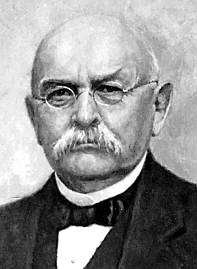 |
19 March 1908 | 2 February 1910 | Liberal Party | Knudsen I V |
| 4 | Wollert Konow (1845–1924) |
%2C_Stortinget.jpg) |
2 February 1910 | 20 February 1912 | Free-minded Liberal Party | Konow H–FV |
| 5 | Jens Bratlie (1856–1939) |
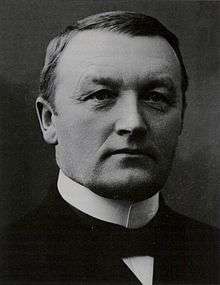 |
20 February 1912 | 31 January 1913 | Conservative Party | Bratlie H–FV |
| (3) | Gunnar Knudsen (1848–1928) |
 |
31 January 1913 | 21 June 1920 | Liberal Party | Knudsen II V |
| 6 | Otto Bahr Halvorsen (1872–1923) |
 |
21 June 1920 | 22 June 1921 | Conservative Party | Bahr Halvorsen I H–FV |
| 7 | Otto Albert Blehr (1847–1927) |
 |
22 June 1921 | 23 March 1923 | Liberal Party | Blehr II V |
| (6) | Otto Bahr Halvorsen (1872–1923) |
 |
23 March 1923 | 23 May 1923 | Conservative Party | Bahr Halvorsen II H–FV |
| 8 | Abraham Berge (1851–1936) |
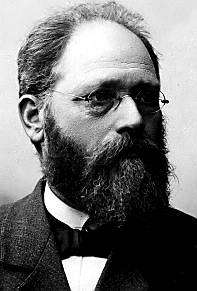 |
30 May 1923 | 25 July 1924 | Free-minded Liberal Party | Berge H–FV |
| 9 | Johan Ludwig Mowinckel (1870–1943) |
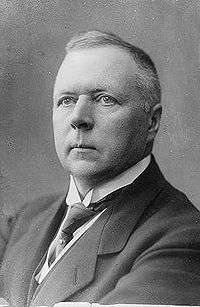 |
25 July 1924 | 5 March 1926 | Liberal Party | Mowinckel I V |
| 10 | Ivar Lykke (1872–1949) |
 |
5 March 1926 | 28 January 1928 | Conservative Party | Lykke H–FV |
| 11 | Christopher Hornsrud (1859–1960) |
 |
28 January 1928 | 15 February 1928 | Labour Party | Hornsrud Ap |
| (9) | Johan Ludwig Mowinckel (1870–1943) |
 |
15 February 1928 | 12 May 1931 | Liberal Party | Mowinckel II V |
| 12 | Peder Kolstad (1878–1932) |
 |
21 May 1931 | 5 March 1932 | Agrarian Party | Kolstad B |
| 13 | Jens Hundseid (1883–1965) |
 |
14 March 1932 | 3 March 1933 | Agrarian Party | Hundseid B |
| (9) | Johan Ludwig Mowinckel (1870–1943) |
 |
3 March 1933 | 20 March 1935 | Liberal Party | Mowinckel III V |
| 14 | Johan Nygaardsvold (1879–1952) |
 |
20 March 1935 (head of government in exile from 1940) | 25 June 1945 | Labour Party | Nygaardsvold Ap |
Heads of government 1940–1945
Following the German invasion of Norway during World War II there were five cabinets or administrations of different nature.
The prewar cabinet headed by Johan Nygaardsvold eventually escaped to London in 1940 and continued there as a government in exile throughout the war, recognised by the western allies but not by the Axis powers, and without holding actual power in Norway. A coup by Vidkun Quisling on 9 April 1940 essentially failed due to lack of support by the German authorities and his proclaimed government never held any significant power. On 15 April 1940 the Supreme Court of Norway appointed the Administrative Council chaired by Conservative Party politician Ingolf Elster Christensen. On 25 September 1940, the Administrative Council was replaced by acting heads of the government departments appointed by the German civilian administrator in Norway Josef Terboven. On 1 February 1942 Quisling was appointed head of a government consisting of members of his party National Unity.
Norwegian Labour Party (Arbeiderpartiet) National Unity (Nasjonal Samling) Conservative Party (Høyre) German Nazi Party No party
| # | Name (Birth-Death) |
Picture | Took office | Left office | Political party | Cabinet |
|---|---|---|---|---|---|---|
| Johan Nygaardsvold (1879–1952) |
 |
20 March 1935 (head of government in exile from 1940) | 25 June 1945 | Labour Party | Nygaardsvold Ap | |
| Vidkun Quisling (1887–1945) |
 |
9 April 1940 | 15 April 1940 | National Unity | Quisling I NS | |
| Ingolf Elster Christensen (1872–1943) as Chairman of the Administrative Council |
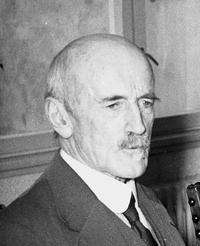 |
15 April 1940 | 25 September 1940 | Conservative Party | Administrative Council | |
| Josef Terboven (1898–1945) as Reichskommissar |
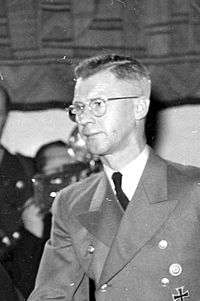 |
25 September 1940 | 1 February 1942 | Member of the National Socialist German Workers' Party, but serving as a German civil servant rather than in a political role | Reichskommissariat NSDAP | |
| Vidkun Quisling (1887–1945) as Minister President |
 |
1 February 1942 | 9 May 1945 | National Unity | Quisling II NS |
Prime Ministers of Norway (1945–present)
Norwegian Labour Party (Arbeiderpartiet) Conservative Party (Høyre) Centre Party (Senterpartiet) Christian Democratic Party (Kristelig Folkeparti)
| # | Name (Birth-Death) |
Picture | Took office | Left office | Political party | Elected | Cabinet(s) |
|---|---|---|---|---|---|---|---|
| 1 | Einar Gerhardsen (1897–1987) |
 |
25 June 1945 | 9 November 1951 | Labour Party | — | Gerhardsen I Ap–H–Sp–V–NKP |
| 1945 1949 |
Gerhardsen II Ap | ||||||
| 2 | Oscar Torp (1893–1958) |
|
9 November 1951 | 22 January 1955 | Labour Party | 1953 | Torp Ap |
| 3 | Einar Gerhardsen (1897–1987) |
 |
22 January 1955 | 28 August 1963 | Labour Party | 1957 1961 |
Gerhardsen III Ap |
| 4 | John Lyng (1905–1978) |
 |
28 August 1963 | 25 September 1963 | Conservative Party | — | Lyng H–Sp–KrF–V |
| 5 | Einar Gerhardsen (1897–1987) |
 |
25 September 1963 | 12 October 1965 | Labour Party | — | Gerhardsen IV Ap |
| 6 | Per Borten (1913–2005) |
|
12 October 1965 | 17 March 1971 | Centre Party | 1965 1969 |
Borten Sp–H–KrF–V |
| 7 | Trygve Bratteli (1910–1984) |
 |
17 March 1971 | 17 October 1972 | Labour Party | — | Bratteli I Ap |
| 8 | Lars Korvald (1916–2006) |
|
17 October 1972 | 12 October 1973 | Christian Democratic Party | — | Korvald KrF–Sp–V |
| 9 | Trygve Bratteli (1910–1984) |
 |
12 October 1973 | 15 January 1976 | Labour Party | 1973 | Bratteli II Ap |
| 10 | Odvar Nordli (1927–) |
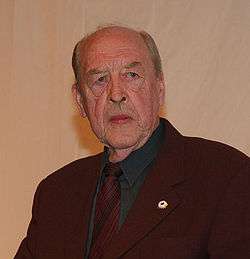 |
15 January 1976 | 4 February 1981 | Labour Party | 1977 | Nordli Ap |
| 11 | Gro Harlem Brundtland (1939–) |
 |
4 February 1981 | 14 October 1981 | Labour Party | — | Brundtland I Ap |
| 12 | Kåre Willoch (1928–) |
.jpg) |
14 October 1981 | 9 May 1986 | Conservative Party | 1981 | Willoch I H |
| 1985 | Willoch II H–KrF–Sp | ||||||
| 13 | Gro Harlem Brundtland (1939–) |
 |
9 May 1986 | 16 October 1989 | Labour Party | — | Brundtland II Ap |
| 14 | Jan P. Syse (1930–1997) |
|
16 October 1989 | 3 November 1990 | Conservative Party | 1989 | Syse H–KrF–Sp |
| 15 | Gro Harlem Brundtland (1939–) |
 |
3 November 1990 | 25 October 1996 | Labour Party | 1993 | Brundtland III Ap |
| 16 | Thorbjørn Jagland (1950–) |
 |
25 October 1996 | 17 October 1997 | Labour Party | — | Jagland Ap |
| 17 | Kjell Magne Bondevik (1947–) |
_(1).jpg) |
17 October 1997 | 17 March 2000 | Christian Democratic Party | 1997 | Bondevik I KrF–Sp–V |
| 18 | Jens Stoltenberg (1959–) |
|
17 March 2000 | 19 October 2001 | Labour Party | — | Stoltenberg I Ap |
| 19 | Kjell Magne Bondevik (1947–) |
_(1).jpg) |
19 October 2001 | 17 October 2005 | Christian Democratic Party | 2001 | Bondevik II KrF–H–V |
| 20 | Jens Stoltenberg (1959–) |
|
17 October 2005 | 16 October 2013 | Labour Party | 2005 2009 |
Stoltenberg II Ap–SV–Sp |
| 21 | Erna Solberg (1961–) |
.jpg) |
16 October 2013 | Incumbent | Conservative Party | 2013 | Solberg H–FrP |
See also
External links
- Norway's Prime Ministers — A pictorial with portraits of Norway's Prime Ministers (Aftenposten)





